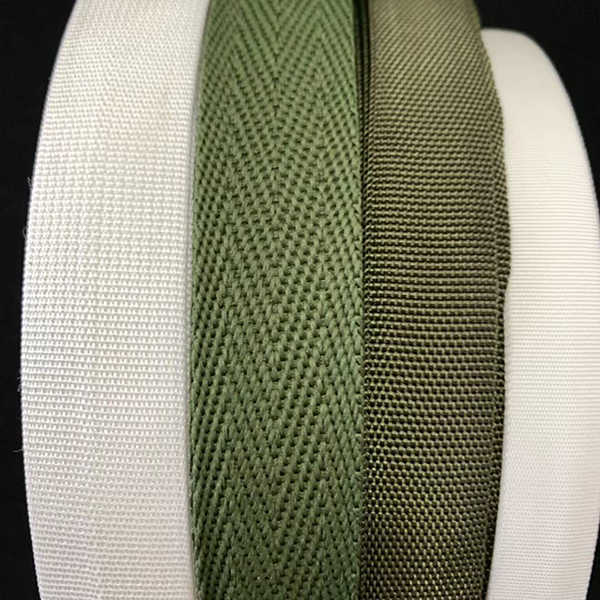Dandong Guangwei Textile Weaving Selvedge webbing Silk texture:
1、 Comfortable. Silk is composed of protein fiber, which has good biocompatibility with human body. In addition, its surface is smooth, and its friction stimulation coefficient to human body is low among all kinds of fibers, only 7.4%. Therefore, it follows the curve of the human body with its supple texture.
2、 Good moisture absorption and desorption. Silk protein fiber is rich in many hydrophilic groups such as amino group (- CHNH), amino group (- NH2), and because of its porosity, it is easy for water molecules to diffuse, so it can absorb or emit water in the air, and maintain a certain amount of water. Under normal temperature, it can help the skin to retain a certain amount of moisture, so as not to make the skin too dry; Wearing it in summer can quickly dissipate sweat and heat from human body, making people feel cool. It is precisely because of this performance that silk fabrics are more suitable for direct contact with human skin. Therefore, we can directly wrap a unique garment with silk scarves in the hot summer, which is not only beautiful but also comfortable.
Silk not only has good heat dissipation performance, but also has good warmth retention. Its thermal insulation is proud of its porous fiber structure. There are many tiny fibers in a silk fiber, and these tiny fibers are composed of even smaller fibers. Therefore, more than 38% of the seemingly solid silk is actually hollow, and there is a large amount of air in these gaps, which prevents the heat emission and makes the silk have good warmth retention.
3、 Sound absorption, dust absorption and heat resistance. The wrapped ribbon silk fabric has a high porosity, so it has good sound absorption and air absorption. Therefore, in addition to making clothes, it can also be used for interior decoration, such as silk carpets, tapestries, curtains, wall coverings, etc. Decorating a room with silk ornaments can not only make the room spotless, but also keep the room quiet. As silk has moisture absorption, moisture release, moisture retention, air absorption and porosity, it can also adjust indoor temperature and humidity, and absorb harmful gases, dust and microorganisms. In addition, the heat denaturation of silk fiber is small and relatively heat-resistant. When it is heated to 100 ℃, it is only about 5-8% brittle, and the thermal variability of most synthetic fibers is 4-5 times greater than that of silk. The combustion temperature of silk is 300~400 ℃, which is a non combustible fiber, while the combustion temperature of synthetic fiber is 200~2600C, which is flammable and fusible. Therefore, using silk fiber as the raw material for interior decoration can not only play the role of sound absorption, dust absorption, heat preservation, but also play the role of flame retardant.
Fourth, UV resistance. Tryptophan and tyrosine in silk protein can absorb ultraviolet light, so silk has a good anti ultraviolet function. Ultraviolet rays are very harmful to human skin. Of course, after absorbing ultraviolet rays, the silk will undergo chemical changes, which will make the silk fabric yellow under the sunlight.


